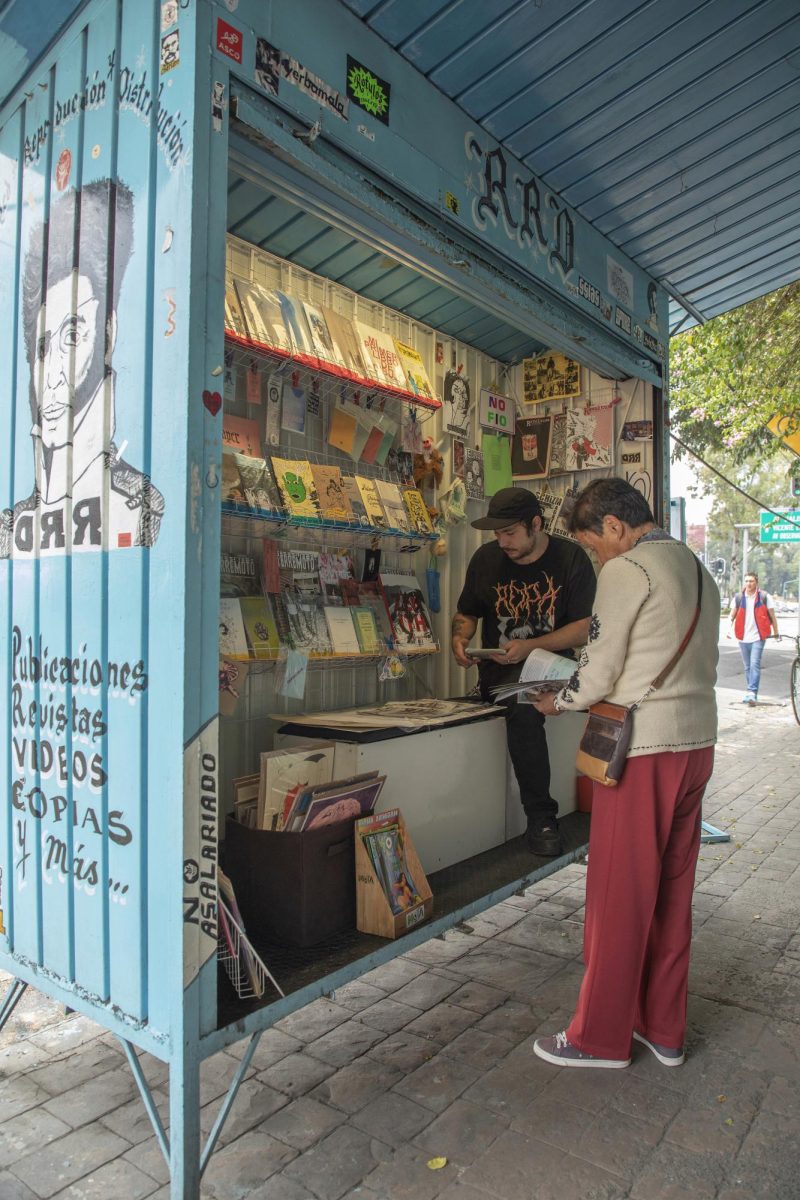Warning: This exhibition contains graphic content and language. Viewer discretion is advised upon visiting.
As our lives become increasingly dominated by technology, the importance of tangible publications — ones that we can flip through, lend to friends, put up on our walls and stick in our journals — has never been greater. Zines are the perfect embodiment of this unique and wonderful experience— these works have evolved alongside alternative culture for the past five decades.
Although much of this remarkable history has been lost to time, an exhibit titled: “Copy Machine Manifestos: Artists Who Make Zines,” defies that erasure. Currently on display at the Brooklyn Museum until March 31, the collection comprises hundreds of zines, photographs, video recordings and essays sourced throughout North America, offering a never-before-seen compilation of this arcane art form.
Short for “magazine” or “fanzine,” zines are independently produced magazines that emphasize the do-it-yourself aspect of creating and sharing art and writing, specifically that which fosters community and challenges systems of oppression. They are inherently accessible to make and share, allowing creators to display their work on an inexpensive and mass scale. First surfacing in the 1930s with the development of a rudimentary duplication machine called the mimeograph, zines rose in popularity four decades later with the advent of the photocopier.
Various subcultures throughout North America such as queercore and punk have experimented with this medium as a means of expression, creating distinct, handmade art that has left a lasting effect on the creative world. Women’s joint demand for justice and liberation manifested into the riot grrrl scene in Olympia, Washington, which gave young girls a space to experiment with their femininity and combat the patriarchy. Unfortunately, due to the independent nature of these publications, many of them have been lost to time while the rest have been scattered across the continent, leaving a bread-crumb path of subculture’s elusive histories.
In spite of these barriers, the Brooklyn Museum has managed to capture the essence of zine creation within a chronological and artfully curated exhibit that offers an enlightening experience for all who enter.
This was a subculture defined by performance artists who commandeered and repurposed pop-culture imagery as a means of social commentary.
The exhibit opens with an exploration of the Correspondence Scene, which spanned from 1969 to 1980. This was a subculture defined by performance artists who commandeered and repurposed pop-culture imagery as a means of social commentary, and it was heavily inspired by the European avant-garde movement of the 1910s and the 1920s. While the scene was short-lived, it greatly influenced its successor: punk culture of the late 1970s.
The punk scene began with a focus on music and was centered on outrage and resistance. As it expanded, queer people began to carve out their own space within the scene, using zines as a means of depicting queer culture and homoerotic content in a way that could not be done in the mainstream at the time. This defiance and demand for respect and liberation resulted in the emergence of phrases such as “homocore” and “queercore,” which came to revise some of punk culture’s more exclusive and violent tropes. This was during a time when queer and trans people were actively suppressed and victimized, a reality upheld by corrupt authority and ignorance.
Through zines, queer and trans communities were able to take a stand against this, loving and existing in the face of adversity, and channeling this tenderness and creativity into the greatest form of resistance. “Copy Machine Manifestos” also explores the ways women expressed their anger and dissatisfaction through the creation of zines toward the world and its inequalities. A notable example of this is Carolee Schneemann’s “Lebanon Series” from 1983. With a characteristically messy composition that reflects its creator’s condemnation of the destruction brought about by the Lebanon War, the series offers a feminist critique of such violence.
The exhibit also displays zines as a long-standing staple among communities of color, who have created art that explores oppression and the intersecting aspects of their identities. Abolitionist Neta Bomani creates work that beautifully explores themes of blackness, technology and identity through several projects on display, including selections from “100 Days of Zines” as well as “Dark Matter Objects.”
Ultimately, zines have historically given a voice to those who exist outside of the constraints of the mainstream, and The Brooklyn Museum provides viewers with a remarkable opportunity to be exposed to those voices which often go undiscovered and unappreciated. “Copy Machine Manifestos: Artists Who Make Zines” offers an extensive and chronological walk through this vast, uncharted history, making it well worth the 45 minute train ride.

